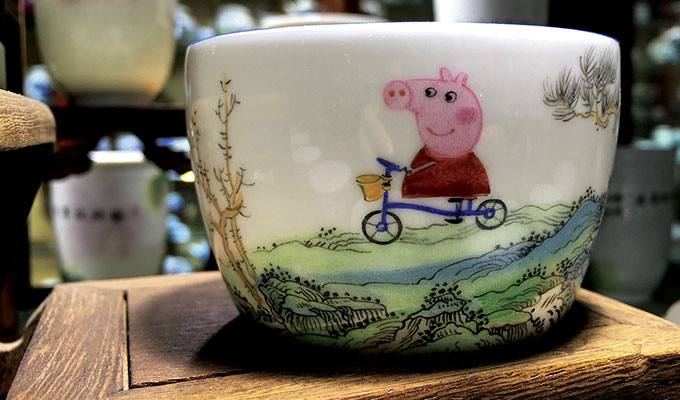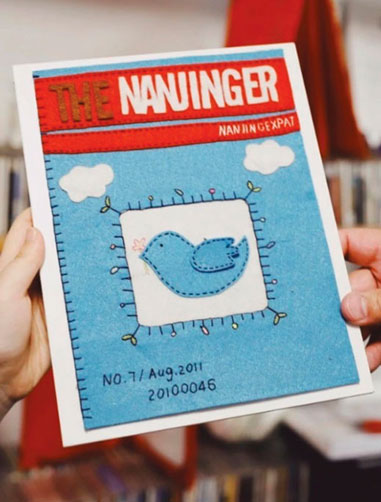This article begins with a squat toilet in Jingdezhen. As I reached for the flush, in an act most mundane, I was compelled to question: Who on earth decided to make the flush button shaped like the Apple logo?
The simple two-dimensional fruit with a bite out of it has got to be one of the most recognisable logos on the planet, but its proliferation throughout even the most bizarre of contexts perhaps has more to say about the power of symbols in China.
In a country where the language stems predominantly from pictographs, symbols have always been at the core of Chinese culture. Their ubiquity today is catalysed by a society infatuated with photo sharing and GIFs. Through Wechat and Weibo, images and icons rapidly gain steam, developing into visual signifiers of historical events or cultural movements.
If you think this is a new phenomenon, then you are very much mistaken. For centuries the Chinese have used visual substitutes and symbols to convey meaning and construct superstitions, often employing puns. Gazing at a Qing dynasty painting of cats sat on a ledge, you are unlikely to pick up on its intended erotic undertones unless fluent in the language of symbolism.
Perhaps most prolific today is Peppa Pig, the cute British piglet who became immensely popular among Chinese children, only to be injected with a darker agenda by adults. Little Peppa’s unexpected association with “shehui ren”, or gangsters, saw her hairdryer-shaped face inked into flesh in defiance of the censorship of “uncivilised” behaviour like getting a tattoo. Fearing trouble, video platform Douyin jumped the gun by banning all references to Peppa Pig on the app – a mere 30,000 videos in one weekend.
But symbols are not always universal and for Peppa Pig that was reason enough to fight back.
Many stood up for the cartoon character and her oinking family, protesting against the negative connotations associated with an innocent and apolitical children’s cartoon.
While British producers may be rubbing their hands together, Peppa Pig’s image continues to penetrate still further into Chinese culture, appealing to both ends of the age spectrum. As well as generic piggy merchandise such as balloons, notebooks and biscuit tins, Peppa is even becoming appropriated into China’s traditional arts.
After flushing the Apple toilet back in Jingdezhen, China’s ceramic capital for the past 1,700 years, I head out to market where I came across a ‘fencai’ porcelain tea set of considerable price decorated with Peppa Pig cycling through a traditional mountain scene on her less traditional cobalt blue bike. An odd juxtaposition although, I might add, Peppa looked very jolly and rather at home in her surroundings.
It’s easy to dismiss such commodities as kitsch, but Apple flushes and luxury Peppa Pig porcelain are testament of the mark these symbols have made and their legitimate place in the visual culture of China today. The omnipresent Apple logo reflects a brand-bonkers society thirsty for consumerism, quite unimaginable half a century ago, while trivial pop culture characters are twisted into political metaphors, laced with parody and satire, that make a run for it in the guarded walls of the Chinese Internet.











